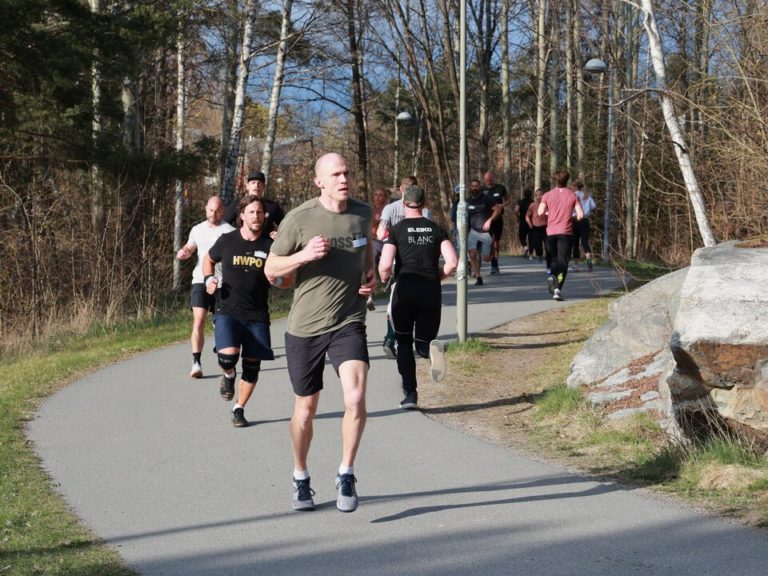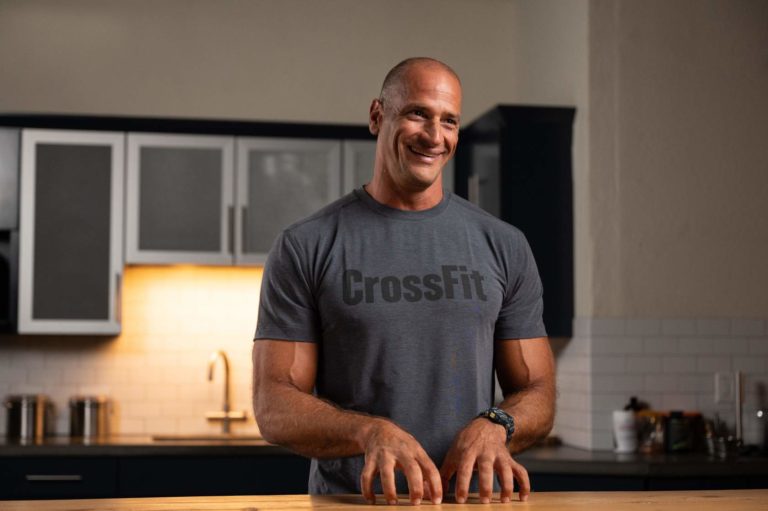To build the broad, general, and inclusive fitness we’re looking for from CrossFit programming, we have to make sure to include the whole gamut of functional movements in all different combinations, in as many different set/rep schemes as we can concoct, across the full spectrum of distances and times, from short to long.
One of CrossFit’s innovations is including dedicated strength training or “heavy days” as an essential complement to the devastatingly effective circuits for which we’ve become famous. Workouts like the CrossFit Total or max snatch, clean, squat, press, or deadlift days are integral to CrossFit programming. As I was flipping through my printouts of the original CrossFit Journal articles, I came across Tony Leyland’s article, “Why You Should Sprint Train,” and was reminded that we not only need heavy days — we also need speed days where the focus is on sprint mechanics and short bursts of high power output sprinting.
 Leyland makes a strong case for including this type of interval work in our programming. First, high power output — short-duration work combined with long rest periods — as we see on “heavy” days (and how “speed” days are conducted), is the best way to train the phosphagen system. While this pathway does produce energy in all of our workouts, especially at the very start, most of the energy produced to fuel workouts like Kelly, Helen, Fran, or Cindy comes from the glycolytic and oxidative pathways.
Leyland makes a strong case for including this type of interval work in our programming. First, high power output — short-duration work combined with long rest periods — as we see on “heavy” days (and how “speed” days are conducted), is the best way to train the phosphagen system. While this pathway does produce energy in all of our workouts, especially at the very start, most of the energy produced to fuel workouts like Kelly, Helen, Fran, or Cindy comes from the glycolytic and oxidative pathways.
Next, Leyland cites research arguing that sprinting distances of 10 to 40 meters is one of the most fundamental physical survival skills humans developed to chase or flee an opponent or animal. In the modern world, sprinting is crucial in so many of our most popular sports: soccer, football, baseball, basketball, gymnastics, and lacrosse, to name a few, where athletes perform quick bursts of maximal or near-maximal power outputs ( one to five seconds in duration) followed by complete rest or lower-intensity walking, jogging or “cruising” to allow for recovery.
While the Olympic lifts develop incredible vertical acceleration by launching a heavy barbell overhead, translating that power into horizontal acceleration, athletes, soldiers, and law enforcement officers need to propel their bodies through space quickly, which requires practicing and applying sprint capacity.
Finally, sprinting rivals heavy lifting in developing strength, power, and neurological skills. When we sprint, the ground reaction force experienced on each step is significantly higher than body weight. Elite sprinters generate forces four to five times their body weight, meaning a 200-pound athlete must generate 800-1000 lb of force on each step! To achieve this tremendous force driving into the ground requires not only immensely powerful glutes, hamstring, quads, and hip flexors (and strong tendons, bones, and ligaments), but also a very rigid midline capable of transmitting the forces from the arm swing down into the lower body as the athlete covers the ground. Developing the physical adaptations we get from sprinting without sprinting is impossible.
With all of these benefits, one might wonder why sprinting isn’t programmed more often in CrossFit. One reason is that, as a community, we are less familiar with sprinting techniques and less confident in coaching them. This should not, however, be a barrier to programming sprints. While sprinting technique is as complex as Olympic lifting, our coaches can learn to master teaching sprints in the same way they’ve mastered teaching weightlifting — by studying videos and learning from experts in the field.
Another reason why coaches might be hesitant to include sprinting in their programming is the small but present risk of injury involved with sprinting. Pulled muscles, such as hamstrings or hip flexors, are the most common injuries we see. The antidote to getting injured from sprinting is to build a solid strength base with functional movements and then implement a phase of mechanics and consistency with sprint drills before intensity is applied. Also, as Leyland mentions in his article, CrossFit is built on a foundation of measurable, observable, and repeatable results. Measuring improvements in hundredths of seconds in 10- and 20-yard dashes is challenging. Still, the benefits obtained from sprinting are worth the effort and application, even if we can’t precisely quantify improvements in time.
You may wonder why the running we do in workouts like Helen or Nancy isn’t sufficient to give us all the necessary adaptations. While these are great workouts, and they certainly pack a metabolic punch, for most people, the overall fatigue from all the movements means the run portion of each workout ends up being more of a very brisk jog. As a result, these runs do not produce the strength and neurological adaptations that a focused sprinting day does.
I wholeheartedly agree with Leyland’s suggestion to include focused sprinting, such as 10-yard accelerations, 20-yard, 30-yard, and 40-yard sprints, and agility drills as a part of CrossFit programming. As with everything, the key is proper implementation, which we will cover in our next article.
Are you a CrossFit coach or want to learn more about speed work? Watch this recent conversation between Eric O’Connor (CF-L4) and Adrian Conway (CF-L3) as they break down why sprinting matters, how to introduce it safely, and ways to incorporate change-of-direction training to improve athleticism, power, and injury prevention.
About the Author
 Stephane Rochet is a Senior Content Writer for CrossFit. He has worked as a Flowmaster on the CrossFit Seminar Staff and has over 15 years of experience as a collegiate/tactical strength and conditioning coach. He is a Certified CrossFit Trainer (CF-L3) and enjoys training athletes in his garage gym.
Stephane Rochet is a Senior Content Writer for CrossFit. He has worked as a Flowmaster on the CrossFit Seminar Staff and has over 15 years of experience as a collegiate/tactical strength and conditioning coach. He is a Certified CrossFit Trainer (CF-L3) and enjoys training athletes in his garage gym.